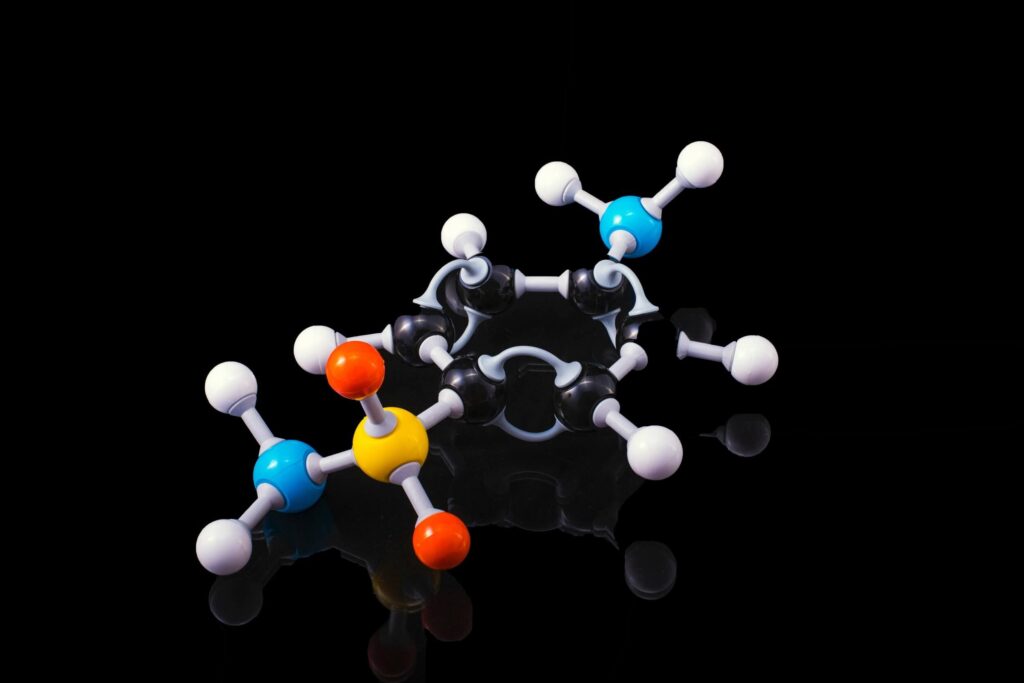Introduction
Metabolic flexibility is the body’s ability to process fuel from either source of energy—fat or glucose. When this ability is impaired from poor health or genes, it can cause metabolic inflexibility, a condition typically characterised by the burning of glucose over fats. To measure if fat is being burned, it is prudent to observe glucose and ketone levels. Metabolic flexibility also supports athletic performance, and can be a precondition to diabetes, insulin resistance or obesity. It can also be genetically inherited. Metabolic flexibility can be improved by fasting (which nudges the body to burn fat, consuming more protein and maintaining good health through effective and frequent exercise.
How does metabolic flexibility impact our body?
Simply put, metabolic flexibility is our body’s ability to supply fuel or energy for any activity from either of the forms in which it is stored, primarily glucose or fat. Good metabolic flexibility means the body is able to efficiently use both pools for energy. In optimal metabolic health, the back and forth between the two to supply fuel for activities is frequently possible. When the body seeks energy, it burns through glucose first, then through glycogen (which is glucose stored in the liver instead of the bloodstream), and finally, the fats. In times of restrained carbohydrate consumption or fasting, fat is the body’s preferred source of fuel.
In practice, a metabolically healthy person isn’t dependent or primed to rely on glucose as a primary energy source. In this state, the body can reliably draw energy from fat as well. A side effect of the body’s reliance on glucose is that blood sugar levels may rise from the release of insulin, which also inhibits the burning of fat. It may further cause a variety of adverse health conditions such as insulin resistance, diabetes or even obesity from sustained or underutilised fat deposits. A 2018 review of research on the topic makes it clear that there are certain factors that affect metabolic flexibility. These include:
- The components of a diet and the frequency of food consumption. This means the nutrients consumed, as carbohydrates are stored as glucose. A higher frequency of food consumption will spike glucose levels more often, which can lead to the body using it as a source of energy, and may also lead to insulin resistance (IR).
- Physical exercise and its impact on the mitochondria and insulin sensitivity. Physical exercise catalyses the mitochondria and its consumption of energy. This makes the body’s cells more receptive to insulin. Since insulin allows energy to be processed by cells, it moderates glucose levels in the bloodstream. Over an extended period of time, this also prevents insulin resistance (IR). IR is a precondition for type 2 diabetes and obesity.
- Consumption of certain pharmaceutical drugs mimic the effect calorie restriction or exercise may have on key organs that participate in metabolism, such as mitochondrial function, or how cells produce energy in a regulated way. Broad-stroke benefits from this include enhanced muscular and heart-related functions and a reduced body weight.
A cohesive way to track metabolic flexibility is to monitor glucose and ketones levels.
How to measure ketones?
To track when the body is using fat as a fuel source, one can measure ketones. Their concentration increases as the body releases fat for certain organs to use as energy. Since other organs, like the brain, are not fuelled by fat, ketones are released simultaneously to fulfil such energy needs. Essentially, ketone presence indicates that the body is burning fat to fuel the body. It also indicates metabolic flexibility, since it demonstrates that the body is capable of using fat to meet its energy requirements.
Ketones contain three compounds: acetoacetate (AcAc), beta-hydroxybutyrate (BHB) and acetone. Of these, AcAc is generated at the first stage, from the release of fatty acids from storage. BHB originates from AcAc, while acetone is made as a by-product of this process. AcAc is measured through a urine test. This has limitations, because if ketone levels are raised sustainably, the count in the result of the urine test is a less accurate result. BHB is measured via a blood test, which is considered to be accurate, although expensive. Both methods yield measurements in millimoles per litre (mmol/L). They are scored between 0 and 6, and a reading of 0.5 mmol/L indicates that the body is burning ketones, or is in a state of ‘ketosis’. Acetone, the final ketonic element, is measured through a breath test in parts per million (PPM). A reading of 2 acetone PPM shows that the body is in ketosis.
How monitoring glucose levels can help monitor ketones
Glucose and ketones are complementary units of energy present in the body. Stable glucose levels indicate suitable conditions for fat burning. As a natural next step, ketone monitoring can establish the occurrence of fat burning. When one tracks both measures, it gives us a bird’s-eye view of metabolic health. Continuous glucose monitoring (CGM) measures how consumption of food can alter or elevate blood glucose levels. Ketone monitoring can indicate when the body receives benefits of ketosis, such as depleted glycogen levels, and fat is being burned.
Metabolic flexibility and athletic performance
Metabolic flexibility can impact athletic performance. Depending on the specifics of a sport, there are differing macronutrient needs to optimise physical performance. For example, before beginning a marathon or undertaking similarly strenuous physical activity, glucose levels are recommended to be brought back into normal range rather than be in a depleted state. A generous degree of fat in a diet, combined with moderate carbohydrates, can be a suitable fuel for optimal athletic performance. Such a diet is labelled low-carbohydrate, high-fat (LCHF) and could lead to lower glucose production, and subsequently, utilisation by the body.
What is metabolic inflexibility?
A disruption of the body’s ability to switch between the two sources of energy can cause metabolic inflexibility. Fat is the key source of fuel for a resting body. However, eating a diet rich in carbohydrates can get their body used to getting their energy needs from glucose (or sugar), which is how carbs are stored in the body. People with this condition may also have a higher carb-to-fat burning ratio. Any disruption or alteration in the ability to retain metabolic flexibility could cause insulin resistance, thereby also raising blood sugar levels.
Metabolic flexibility/Metabolic Inflexibility and metabolic health
Metabolism is a series of life-sustaining chemical processes in each cell transforming the calories we eat into fuel to keep us alive. Metabolic health is defined as having ideal levels of blood sugar, triglycerides, high-density lipoprotein (HDL) cholesterol, blood pressure and waist circumference without using medications. Metabolic flexibility is the ability and capacity of our body’s organs—cells, tissues, and organisms—to allow for oxidation to make fuel available. Metabolic inflexibility is a lack of this ability to switch between fuel sources, i.e., fat and glucose, to meet energy needs. Metabolic inflexibility can be a result of conditions like insulin resistance, diabetes and obesity. Metabolic flexibility can impact metabolic health in certain ways.
There is evidence to support the hypothesis that children of people with insulin-resistance carry the condition in their skeletal muscle. Further, there can be an association of this impairment in how their metabolism may draw energy from fat. Research also suggests that under diabetic conditions, there is an excess of fat available due to impaired insulin signaling systems. This fat can surround the catabolic machinery, that is, a metabolic process that breaks down digested food into energy-fuelling molecules and prevents it from breaking down glucose for nutrition. Consequently, the accumulated glucose rises and may prevent the mitochondrial function. This can happen by altering the body’s protein pool or causing a rigid gene transcription programme. Mitochondrial malfunctioning, such as its indecision while in the face of nutrient overload or intense substrate competition, is related to obesity-related conditions. Nutrient overload takes place when the body consumes more energy than it requires or burns. It is considered chronic when this becomes a dietary pattern over a sustained period of time. Substrate competition is the circumstance when enzymes, which speed up metabolism, face a shortage of substrates to latch on to so they can execute the metabolism process. This can also create an environment in which the body reduces or does a poor job of switching between fuels (glucose and fat) for energy.
Ways to improve metabolic flexibility
Metabolic flexibility can be improved upon. By definition, it requires the body to use both sources of fuel available with ease and frequency. Glucose is a short-term, immediate source of fuel, while fuel from fat is sustainable and more of a slow-burn resource.
Exercise is a suitable first step to improve or regain metabolic flexibility. In a 2013 study conducted on 24 obese adults who exercised five days a week for up to an hour at a maximum 85% heart rate capacity, the following results were found:
- Improved insulin sensitivity, i.e., a reduction in insulin resistance, which is a precondition for diabetes, and obesity.
- Impaired fasting glucose (IFG) blunts the impact of impaired glucose tolerance (IGT), i.e., it moderates the effects of a condition that is considered borderline diabetic.
- It also suppresses hepatic glucose production (HGP) with less impact on fatty acid suppression. The former prevents an excess of glucose availability, and the latter allows fats to become comparatively available as a fuel source. This can make the energy storage environment conducive to metabolic flexibility.
Eating a diet with emphasis on certain nutrients is another key step for metabolic flexibility. A low magnesium count can hamper the body’s functional or metabolic processes. In particular, it can affect stress response and the body’s systemic inflammatory response. A review consolidates that a diet with polyphenols, omega-3 fatty acids and dietary fibre can positively impact mitochondrial function and dynamics. Polyphenols are organic nutrients present in plants. They are present in berries, herbs and spices, clove, peppermint, cocoa powder, chestnuts, artichokes, red onions and fruits such as black olives.
Conclusion
Metabolic flexibility is the body’s ability to use either fat or glucose for energy. The lack of this ability is called metabolic inflexibility, which can lead to excess glucose in the bloodstream or an over-reliance on carbohydrate consumption. Both can have significant cardiovascular and metabolic side effects such as diabetes, obesity and insulin resistance. Metabolic flexibility can aid in athletic performance. It can be regained or improved by eating certain nutrients—namely polyphenols, omega-3 fatty acids and dietary fibre—and exercising to nudge the body towards burning fat.
Disclaimer:The contents of this article are for general information and educational purposes only. It neither provides any medical advice nor intends to substitute professional medical opinion on the treatment, diagnosis, prevention or alleviation of any disease, disorder or disability. Always consult with your doctor or qualified healthcare professional about your health condition and/or concerns and before undertaking a new health care regimen including making any dietary or lifestyle changes.
References
- How monitoring ketones and glucose can help you achieve metabolic flexibility – Levels (levelshealth.com)
- https://www.ncbi.nlm.nih.gov/pmc/articles/PMC5513193/
- Metabolic Flexibility as an Adaptation to Energy Resources and Requirements in Health and Disease | Endocrine Reviews | Oxford Academic (oup.com)
- Metabolic inflexibility: when mitochondrial indecision leads to metabolic gridlock – PubMed (nih.gov)
- Metabolic Flexibility | Frontiers Research Topic (frontiersin.org)








